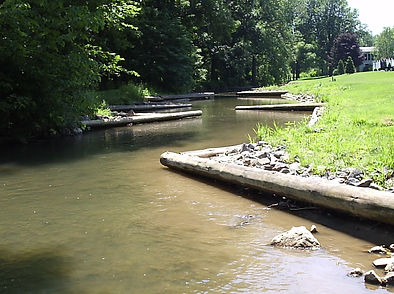
Environmental Concerns

Even though the area remains rural, its human development puts a strain on the environment of the watershed. Land use can significantly influence water quality. Generally areas undeveloped with little human presence have better water quality while streams in and around agricultural and developed areas generally show some signs of degradation.
Erosion from cultivated fields and stream banks where livestock is not excluded, manure runoff, and over-application of fertilizer and pesticides can be problems. Likewise, farms are a large source of excess nitrogen, phosphorus and silt. Most farmers have already taken measures reduce agricultural run-off.
The Pennsylvania Department of Environmental Protection, which periodically measures the water quality of the streams, identified 69 of the 268 stream total miles as impaired in 2010. Recent testing by BCWA at the request of the PA Department of Environmental Protection found that the bacteria levels in Buffalo Creek and its tributaries in agricultural area to be at the highest level of impairment. Tests show that the bacteria are primarily from domestic animals (cows, pigs, horses, sheep, ducks). All farms are now required to develop a plan and timeframe to reduce the levels of nitrogen, phosphorus bacteria and silt, as well as buffer land near streams.


Land that is used for residential and commercial purposes often contributes excessive amounts of stormwater runoff, pollutants that wash off parking lots, thermal inputs, and increased nutrient loads associated with over application of lawn and garden chemicals, malfunctioning on-lot septic systems and effluent from sewage treatment plants. Storm runoff from paved surfaces, buildings, and lawns put chemical pollutants into the streams and increase the likelihood of flooding. The recent adoption of “Cultivating Community: A Plan for Union County’s Future” and environmental innovations in residential developments will help reduce these problems.
